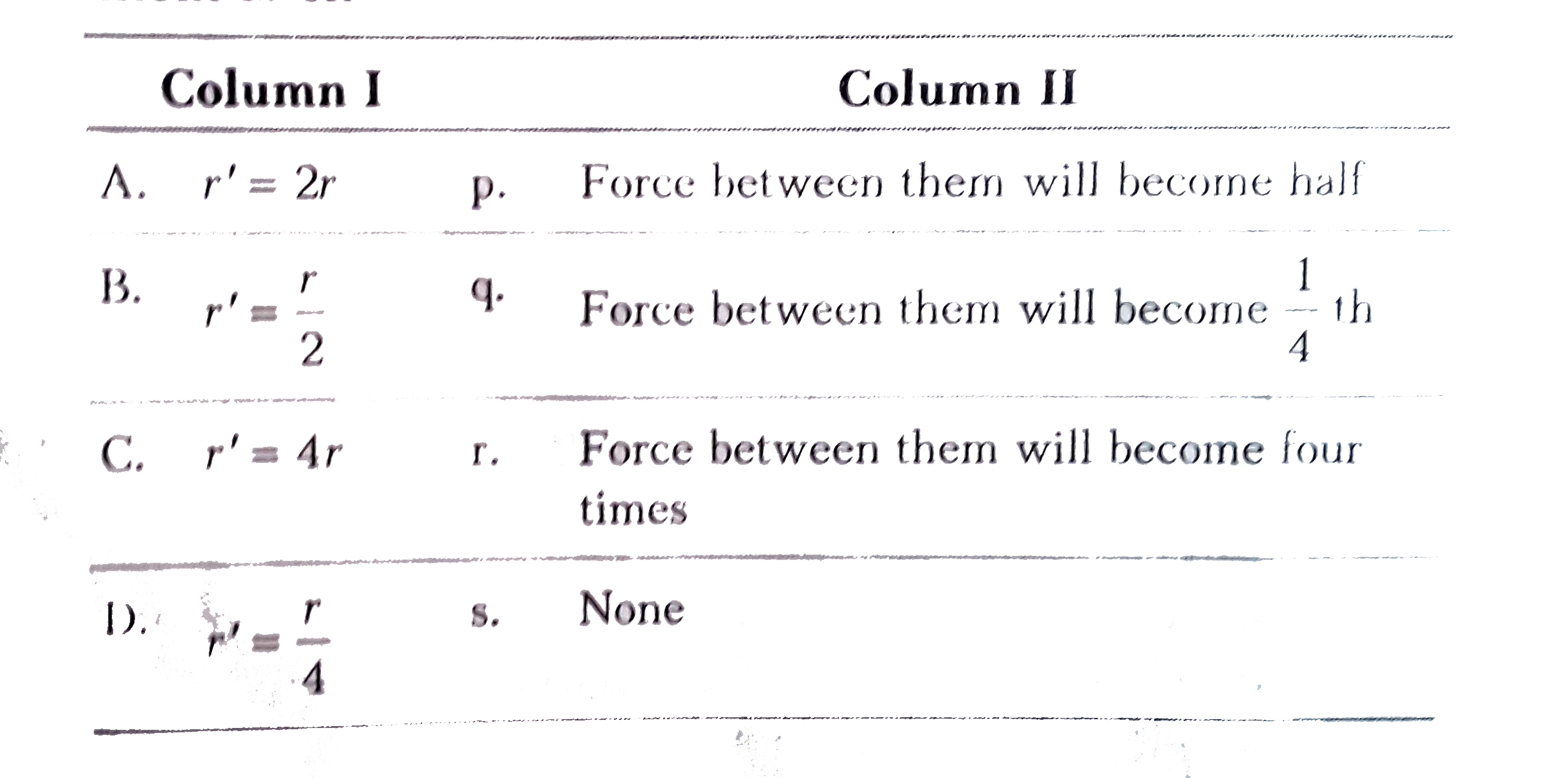A total charge Q is broken in two parts Q1 and Q2 and they are placed at a distance R from each other. The maximum force of repulsion between them will occur, when
Q2=QR,Q1=Q−QR
Q2=Q4,Q1=Q−2Q3
Q2=Q4,Q1=3Q4
Q1=Q2,Q2=Q2
To solve the problem of finding the maximum force of repulsion between two charges Q1 and Q2 that sum to a total charge Q and are separated by a distance R, we can follow these steps:
1. Understand the Problem: We have a total charge Q that is divided into two parts, Q1 and Q2. The relationship between these charges is given by:
Q1+Q2=Q
2. Express the Force of Repulsion: The force of repulsion F between two point charges is given by Coulomb's law:
F=kQ1Q2R2
where k is Coulomb's constant.
3. Substitute for One Charge: To express the force in terms of a single variable, we can substitute Q2 with Q−Q1:
F=kQ1(Q−Q1)R2
4. Simplify the Equation: This can be rewritten as:
F=kQ1(Q−Q1)R2=k(Q1Q−Q21)R2
5. Differentiate the Force with Respect to Q1: To find the maximum force, we need to differentiate F with respect to Q1 and set the derivative equal to zero:
dFdQ1=k(Q−2Q1)R2=0
6. Solve for Q1: Setting the derivative to zero gives:
Q−2Q1=0⟹Q1=Q2
7. Find Q2: Since Q2=Q−Q1:
Q2=Q−Q2=Q2
8. Conclusion: The maximum force of repulsion occurs when both charges are equal:
Q1=Q2=Q2
Final Answer:
The maximum force of repulsion between the two charges occurs when Q1=Q2 and Q2=Q2.
---
Q1+Q2=Q
F=kQ1Q2R2
where k is Coulomb's constant.
F=kQ1(Q−Q1)R2
F=kQ1(Q−Q1)R2=k(Q1Q−Q21)R2
dFdQ1=k(Q−2Q1)R2=0
Q−2Q1=0⟹Q1=Q2
Q2=Q−Q2=Q2
Q1=Q2=Q2
The maximum force of repulsion between the two charges occurs when Q1=Q2 and Q2=Q2.
Similar Questions
A charge Q is divided into two parts q1 and q2 such that they experience maximum force of repulsion when separated by certain distance. The ratio of Q,q1 and q2 is
View SolutionA certain charge Q is divided into two parts q and Q−q, wheich are then separated by a cetain distance. What must q be in terms of Q to maximum the electrostatic repulsion between the two charges?
View Solution
Knowledge Check
A certain charge Q is divided at first into two parts, q and Q-q. later on the charges are placed at a certain distance. If he force of interaction between two charges is maximum, then
AQq=41BQq=21CQq=31DQq=13A charge Q is divided into two parts q1 and q2 such that they experience maximum force of repulsion when separated by certain distance. The ratio of Q,q1 and q2 is
A1:1:2B1:2:2C2:2:1D2:2:1In the following question a statement of assertion (A) is followed by a statement of reason (R )
A : Two large conducting spheres carrying charges Q1andQ2 are brought close to each other. The magnitude of electrostatic force between them is exactly given by Q1Q2/4πε0r2 , where r is the distance between their centres.
R: Here charges Q1andQ2 can be assumed to be concentrated at the centres of their respective spheres.AIf both Assertion & Reason are true and the reason is the correct explanation of the assertion , then mark (1).BIf both Assertion & Reason are true but the reason is not correct explanation of the assertion then mark (2)CIf Assertion is true statement but Reason is false, then mark (3)DIf both Assertion and Reason are false statements , then mark (4).
Two point charge Q and 4Q are fixed at a distance of 12cm from each other. Sketch lines of force and locate the neutral point, if any .
View SolutionTwo charge +q and −q are placed at distance r. Match the following two columns when distance between them is charged to r'.

View SolutionTwo charges +q and -q are placed at distance r. Match the following two columns when distance between them is changed to r'.

View SolutionA charge 'Q' is divided into two parts A and B the two parts are separated by a certain fixed distance. Find for what charges on A and B would the force between them be maximum and comment when the force is minimum.
View SolutionTwo metallic spehres each of mass M and radius R charged separately to Q1 and Q2 are at a distance d between their centres (d>2R) The force between them will be
View Solution

